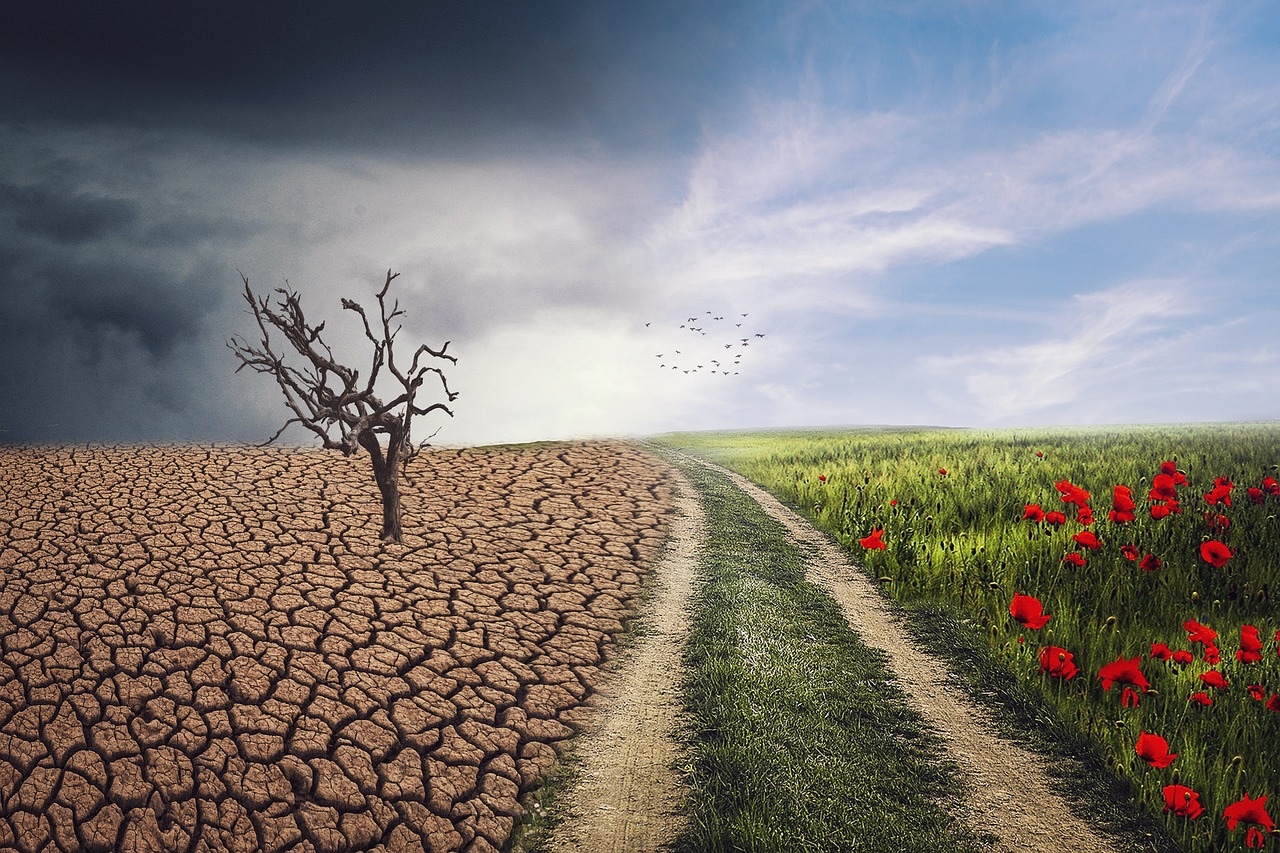

As the world population continues to grow, the demand for food is rapidly increasing, with an estimated 45% increase in food production required by 2050 . This puts huge pressure on the agricultural industry to become more robust and ramp up productivity. However, the challenge of feeding the world is not only a matter of quantity but also of quality and sustainability.
Reducing Carbon Emissions
As the world exceeds the critical 1.5C warming threshold 12 months in a row, the need to rapidly reduce carbon emissions has never been greater. The stability and resilience of the global food system is at risk and the challenge of reaching these goals by 2050 is further compounded by the introduction of strict climate action legislation.
In 2021, The Climate Action and Low Carbon Development Bill was passed, which commits Ireland to a legally binding target of a climate neutral economy no later than 2050. With agriculture in Ireland contributing to 38.5% of the total GHGs emitted, the industry needs to adopt innovative technologies and practices that can both increase yield, while also reducing environmental impact and adapting to changing climatic conditions.
The Rise of AgriTech
In recent years, farming has become an increasingly high-tech business focused on expanding scale and efficiency, with more recent innovations focusing on improving sustainability. In 2023, the AgriTech market was valued at $24.19 billion USD globally and is forecasted to grow to $54.17 billion USD by 2029. Therefore, the demand for novel technologies is expected to continue to rise, as will the opportunity for new and existing companies.
AI is one technology that has grabbed the agricultural industry by the horns. A juxtaposition, merging what is considered the oldest technology with one of the newest, AI, could significantly mitigate some of the climate and supply challenges faced by the agricultural sector. In recent years, there has been an increase in companies designing various AI solutions aimed at improving productivity and sustainability within the agricultural industry.
Leveraging Data
Big data has become an integral component within every industry to optimise processes and profitability. With the rapid development of AI technology, this data can now create even more value by providing better insights, automating tasks and enhancing decision making.
In the agricultural sector specifically, AI-powered tools are being developed to perform various predictive analytics such as monitoring?weather conditions and recommending the application of fertiliser. By providing a more holistic understanding of farming processes, this technology is empowering farmers to make data driven decisions from supply chain management to monitoring crop and livestock health.
From the perspective of Irish agriculture, Machine learning (ML) and AI algorithms are also being applied to the livestock and dairy industry with a concept known as precision livestock farming (PLF). An example of this technology is tracking milk production for individual cows and interpreting this data to perform health screening for the animal or to forecast supply for market demands.
With dairy farms having higher levels of environmental emissions due to the greater production intensity, PLF technology has the potential to reduce GHG emissions by streamlining daily farm activities and decreasing waste. Overall, this increase in knowledge and visibility enables improved efficiency and sustainability, which is critical in the attempt to reduce total GHG emissions and support Ireland’s transition to Net Zero by 2050.
AI-powered Computer Vision
Computer vision is another application of AI that is being implemented in various farming processes. With the majority of farms in Ireland focused on livestock production, particularly beef and dairy, there is mounting pressure on farmers to balance meeting market needs while reducing GHG emissions.
Similar to milk production capture technology, advancements in computer vision solutions that use AI and ML algorithms can be used to monitor livestock behaviours and welfare in real-time. Providing valuable insights into herd health and management at scale can enable early intervention if issues are detected.
Alleviating what is a labour and resource intensive activity can facilitate more focus to be placed on improving efficiency and yield in other areas on the farm. According to academic research produced from UK dairy farming data, increasing productivity can reduce a cow’s Carbon Footprint per Kg of milk by up to 33%. Therefore, this technology offers a highly effective solution for reducing GHG emissions in the livestock industry.
In addition to monitoring livestock health, AI-powered computer vision systems can be used to detect the presence of pests or diseases in crops and reduce the use of pesticides, which contribute to soil, water, and air pollution. With initiatives such as the EU’s farm-to-fork strategy, there has been a drive to reduce the use of pesticides by 50% before 2030. Therefore, improving detection methods to enable farmers to act quickly in exterminating pests or isolating crops and preventing the spread of disease can help achieve this target.
When it comes to accuracy and efficiency, the time-consuming and error-prone method of manual inspection can’t compete with a machine learning, digital image processing tool that collects and analyses visual characteristics of crops instantaneously and compares them against large datasets of trained material.
The Growth of Automation
Farming automation has come a long way since the release of the first commercially successful steel plough in 1837. Coined the fourth agricultural revolution, new technologies within the agricultural sector are changing the game when it comes to sustainably intensifying global food production. Recent advancements in automation and robotics have seen the development of autonomous tractors, smart irrigation systems and surveillance drones that can relieve farmers of repetitive and laborious tasks.
These innovations reduce costs, increase yields and minimise resource use, promoting sustainable farming practices. For example, farm machinery companies have developed electric, autonomous combines with no operating emissions that can make real-time automatic adjustments using AI algorithms.
Similarly, electric drones are being used for crop surveillance, to extract soil samples to check temperatures, moisture and elevation. However, not all new technologies can boast a story of sustainability and reduced carbon emissions. While the growth of automatic milking systems (AMS) has shown promising for Irish farmers tackling labour shortages, studies conducted in Norway found that adoption of this technology induced secondary adverse effects on GHG emissions through a decrease labour per cow and increase in herd sizes.
This highlights how the transition to AI-powered automation may not always result in a better outcome all around and that there is a long way to go with innovation in agri-business. With over 50% of Irish farmland devoted to grasslands for pasture , there is a huge market for AI and automation solutions that focus on reducing the environmental impact of grass-farming activities. This is reflected through heavy investment in Agritech start-ups and government bodies offering grants such as the Targeted Agriculture Modernisation Schemes (TAMS).
Improving Environmental Sustainability
Technical improvements at the farm level are one crucial path to improved environmental sustainability. This year, Ireland achieved the lowest GHG emissions in 30 years, with agriculture achieving a reduction of 4.6% from previous years. While this is positive news for 2023, we are still well below the target to reach 51% by 2030. The increasing threat posed by climate change requires a more drastic reduction and more aggressive strategies.
Pairing this with the growing demand for food, we are faced with a perfect storm in the agricultural sector when it comes to increasing productivity while decreasing environmental impact. Increased funding in R&D of sustainable agricultural solutions is vital to our success in achieving these climate targets. As the saying goes, you reap what you sow.
Emerging Irish Tech and R&D Series
This is the final article in KPMG’s 4-part series on emerging technologies in Ireland and their potential application for research and development.
For more insights or if you have an R&D-related query, visit KPMG’s R&D Incentives practice.
 Guest article by Siofra Burke, Senior Technical Consultant, R&D Tax Incentives Practice at KPMG
Guest article by Siofra Burke, Senior Technical Consultant, R&D Tax Incentives Practice at KPMG

